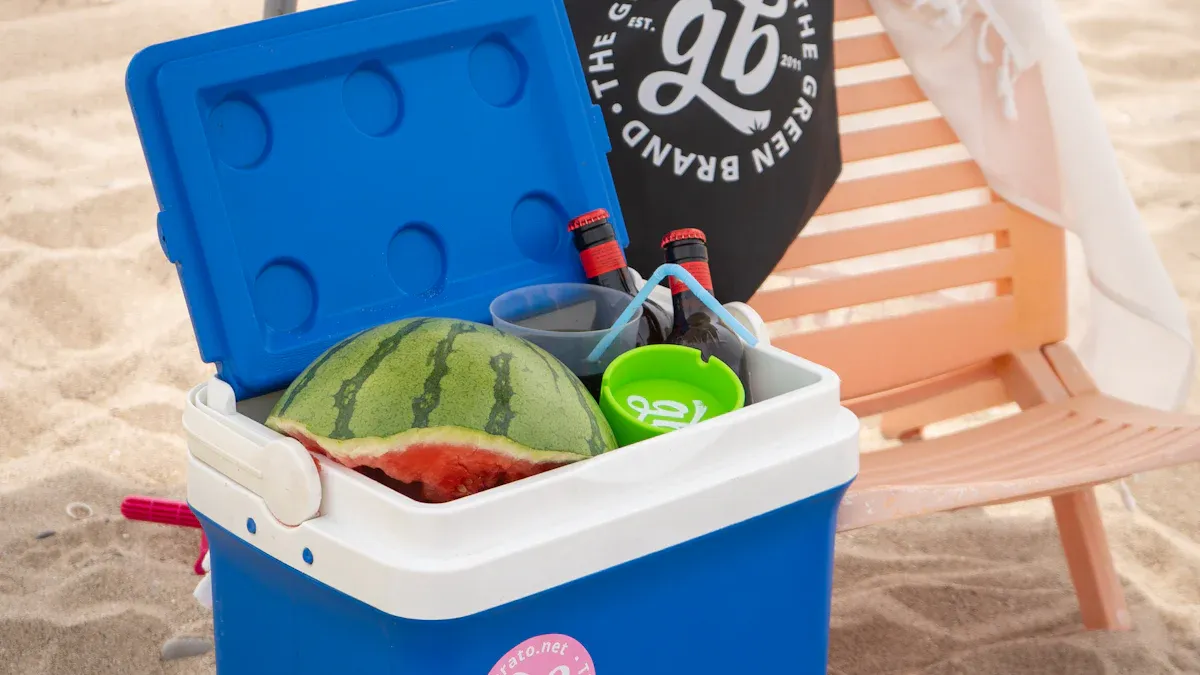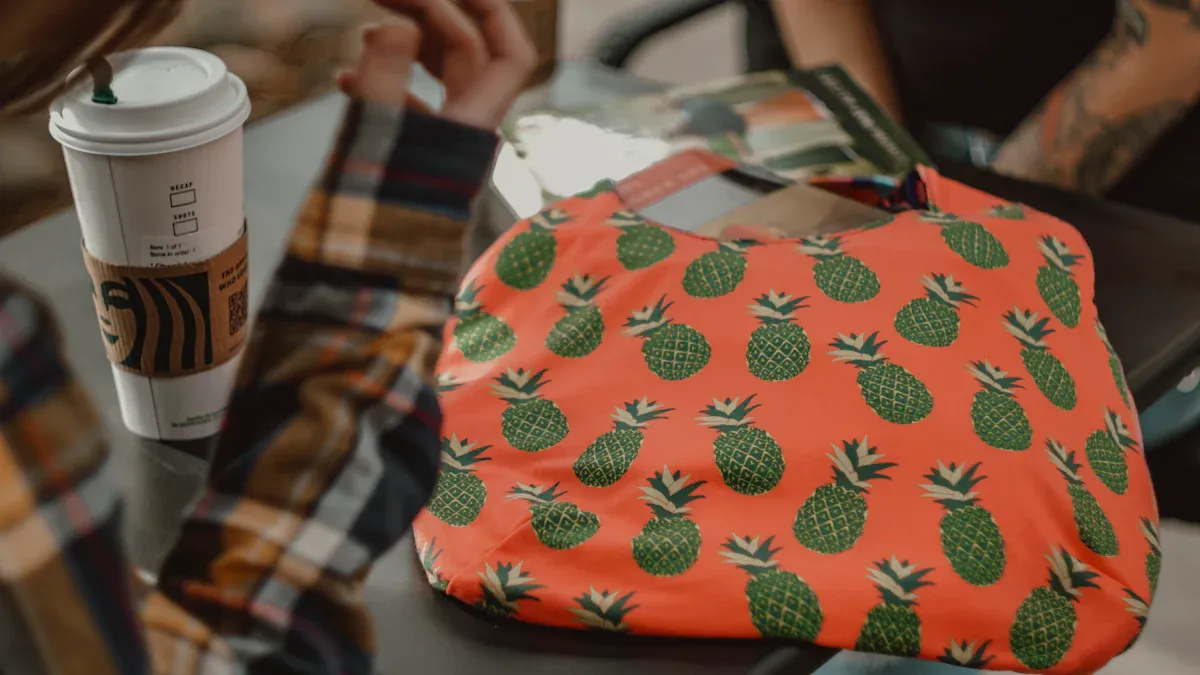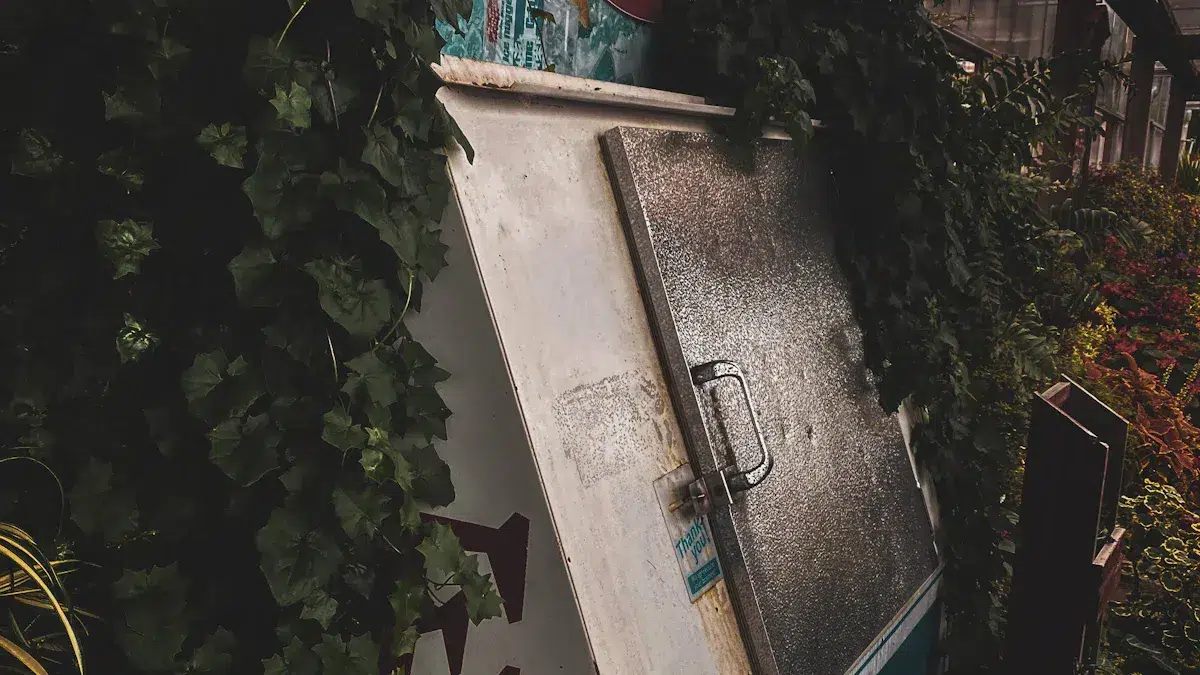
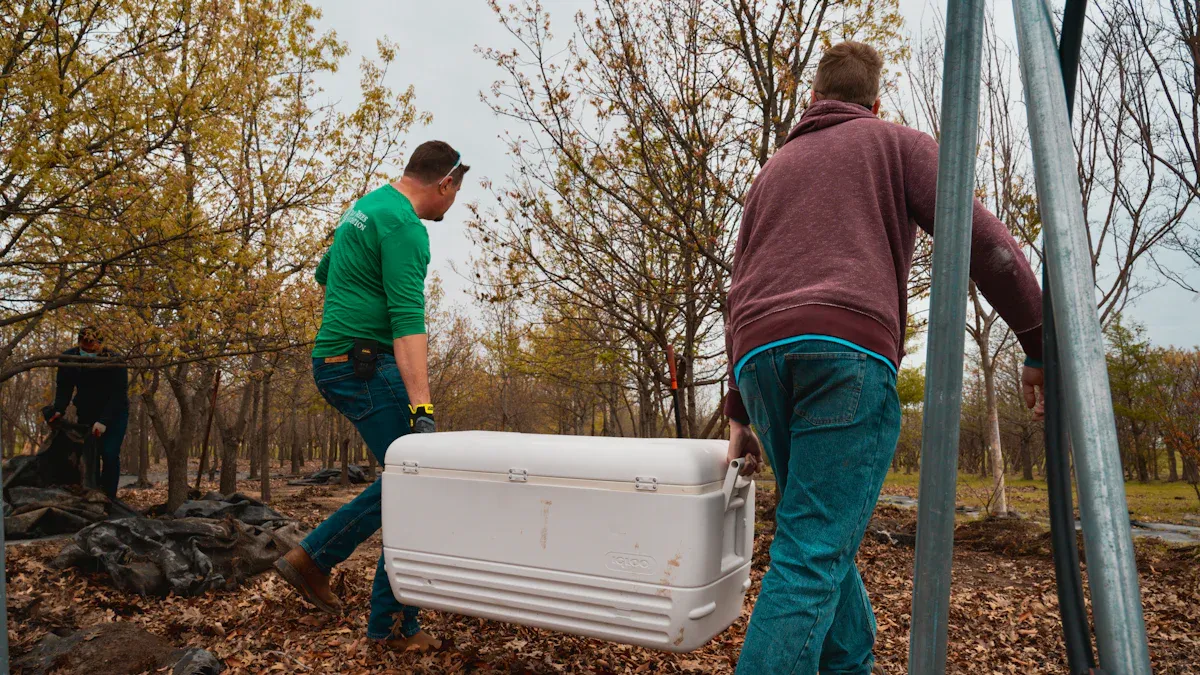
Choosing the right huge cooler box for your trip starts with matching the size to your group and how long you plan to be away. Many travelers pick a cooler that is too small or too big, leading to food spoilage or wasted space. Experts suggest you fill about two-thirds of your huge cooler box with ice and one-third with food to keep everything cold. You should also avoid leaving empty spaces, skip adding warm items, and keep the cooler shaded. KUER brings years of innovation and advanced manufacturing to every cooler, helping you get the best results on your next adventure.
- Do not open the cooler too often during the day.
- Pre-chill food and drinks before packing.
- Cover the cooler with a towel or keep it in the shade for better performance.
Choose a Cooler for Your Trip
When you plan your next outdoor adventure, you need to choose a cooler that matches your group size, trip length, and planned activities. KUER’s years of experience in cooler design help you find the best fit for any situation. Let’s break down the key factors to help you make the right choice.
Assess Group Size
The number of people in your group has a big impact on the size of the huge cooler box you need. If you travel alone or with one friend, a small cooler works well. For family trips or larger groups, you need a bigger cooler to store enough food and drinks for everyone.
- Small groups or day trips: Cooler size of 20-45 quarts is enough for drinks and snacks.
- Weekend camping or medium-sized groups: Medium coolers of 45-65 quarts give you space for food and beverages.
- Extended camping trips or larger groups: Large coolers over 100 quarts offer ample storage and better ice retention.
- Specialized activities like hunting or fishing: Large coolers (100+ quarts) are essential for storing game meat or fish.
You should also think about how much gear you want to bring. Larger boxes may be heavier and take up more space in your vehicle, but they help you stay prepared for longer trips. KUER designs coolers for every group size, from solo campers to big family gatherings.
Tip: For multi-day adventures, outdoor experts recommend about 15-20 quarts per person. This helps you estimate the right capacity for your group.
| Group Size | Recommended Cooler Capacity (Quarts) | Example Use Case |
|---|---|---|
| 1-2 | 20-45 | Day trips, solo camping |
| 2-4 | 45-65 | Weekend camping, small families |
| 4-6 | 65-75 | Camping weekend, fishing trips |
| 6+ | 100+ | Extended trips, hunting, events |
Trip Duration
How long you plan to stay outdoors changes the type of cooler you need. Short trips need less storage and ice, while longer trips require a huge cooler box with more space and better insulation.
- Longer trips need more ice. Use block ice for longer-lasting cold and cubed ice for quick chilling.
- Frozen water bottles can replace some ice and give you cold water as they melt.
- Organize your cooler by putting perishables close to the ice and less perishable items farther away.
- Fill your cooler as much as possible to reduce air gaps and keep things cold.
- Use lid barriers or extra insulation inside the cooler to improve ice retention.
- For very long trips, dry ice can keep food frozen, but you must handle it carefully.
| Feature | Cooler Bag (Short Trips) | Cooler Box (Long Trips) |
|---|---|---|
| Temperature Retention | About 24 hours | Up to 5-7 days |
| Safe Temperature Time | Around 14.5 hours below 45°F | 36-45 hours below 40°F |
| Insulation Thickness | Thin foam (~2.33cm) | Thick high-density polyurethane foam (R-32) |
| Sealing Method | Airtight zippers | Gaskets and pressure-fit lids |
| Best Use | Short trips, affordability | Multi-day trips, strict temperature control |
A huge cooler box with thick insulation and strong seals keeps your food safe for several days. KUER’s coolers use advanced materials to help you enjoy your trip without worrying about spoiled food.
Activity Type
The activities you plan affect the cooler you need. Camping, fishing, hunting, and tailgating all have different storage needs.
| Cooler Size (Quarts) | Typical Use Related to Activities |
|---|---|
| <15 | Day trips, lunch and drinks for individuals |
| 15-25 | Overnight stays for one or two people |
| 25-45 | Small family camping overnight or multiple nights for a couple |
| 45-60 | Several meals or a day’s fishing catch |
| 60+ | Extended off-grid camping trips, hunting, or large group events |
- Adventure coolers up to 103 quarts work well for active outdoor use like fishing and rafting.
- Soft-sided coolers (20-30 quarts) are great for tailgating, picnics, and beach days.
- Pro coolers (45, 65, 150 quarts) suit professional or extended outdoor activities such as hunting, fishing, and catering.
- Weekend getaways and small groups often use 35-55 quart coolers for camping.
- Family camping trips for a 3-day weekend usually need 65-75 quart coolers.
- Large groups or long expeditions require very large coolers (100+ quarts).
KUER’s product range covers every activity, so you can always choose a cooler that fits your needs and budget. Whether you plan a short picnic or a week-long outdoor adventure, choosing the right cooler ensures your food stays fresh and your drinks stay cold.
Note: Always match your cooler size to your group, trip length, and planned activities. This helps you avoid wasted space and keeps your budget in check.
Huge Cooler Box Size Guide
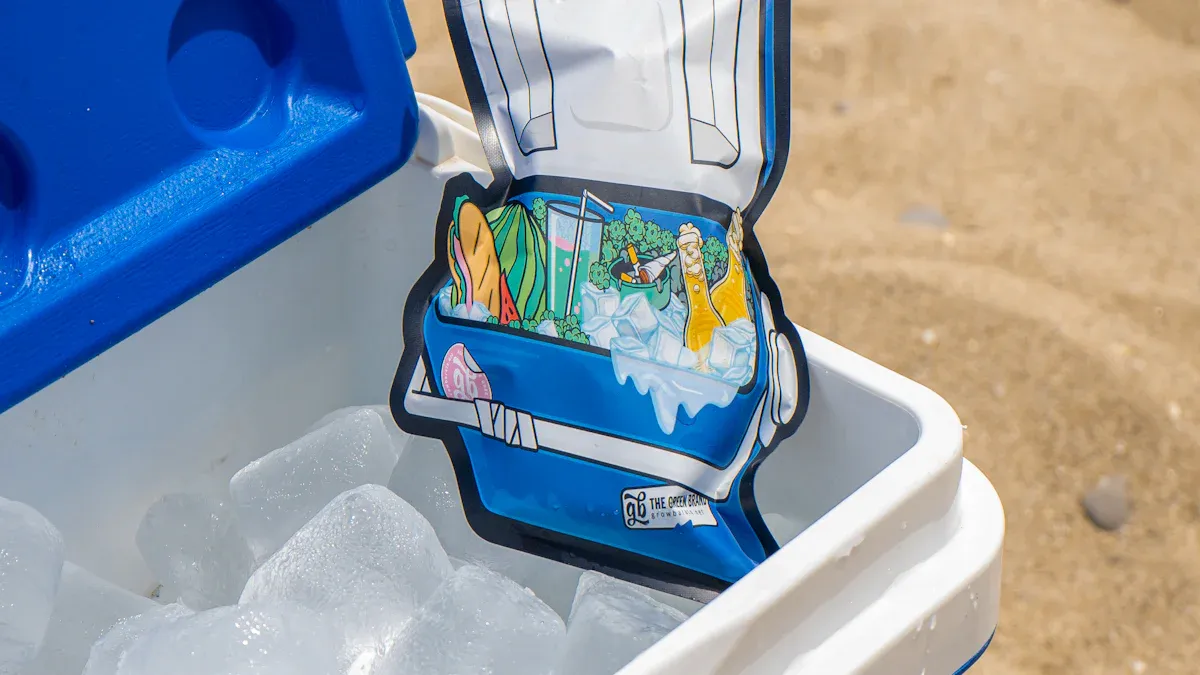
Capacity Needs
Choosing the right cooler size and capacity is one of the most important steps for a successful trip. You want a cooler that holds enough food and drinks for everyone, but you also want it to fit in your car and be easy to carry. The best cooler for you depends on how many people join your trip, how long you plan to stay, and what you want to keep cold.
For a solo overnight trip, you usually need a cooler with a capacity of 20 to 30 quarts. This size fits snacks, drinks, and a few meals. If you travel with a small group for a weekend, a 45 to 60-quart cooler works well. It gives you space for more food and ice, so you do not have to restock often. Large groups or long trips need a bigger cooler, usually 75 to 100 quarts or more. This size camping cooler can store enough supplies for several days.
Cooler boxes for large groups often range from 55 to 77 quarts. Brands like Blue Coolers, YETI, and Coleman offer models in this range. These coolers keep ice for up to six days, have strong handles, and secure latches. You can use them for family camping, parties, or big events. When you pick a cooler, always think about how much you need to store and how long you want things to stay cold.
Tip: Always fill your cooler as much as possible. A full cooler keeps ice longer because there is less air inside.
Cooler Size Chart
A cooler size chart helps you match your needs to the right cooler. You can see which cooler sizes work best for different group sizes and trip lengths. This makes it easier to pick a cooler that fits your plans and avoids problems like running out of space or carrying a cooler that is too heavy.
Here is a table showing how cooler size and capacity match different uses:
| Cooler Size Category | Capacity Range (Quarts) | Typical Use Case | Usage Example |
|---|---|---|---|
| Mini | Less than 10 | Individual snacks or lunches | Office lunches, short outings |
| Small | Up to 15-20 | Personal use or short trips | Day hikes, picnics for 1-2 people |
| Medium | 16-39 | Small groups or day trips | Family outings, weekend camping |
| Large | 40+ | Long trips or group events | Extended camping, parties |
| Extra Large | Over 100 | Big gatherings or long getaways | Large family reunions, adventures |
You can also compare popular cooler models for large groups:
| Cooler Model | Capacity (Quarts) | Best For |
|---|---|---|
| Blue Coolers Ice Vault | 55-60 | Large families or groups |
| YETI Tundra 65 | 77 (actual ~56) | Large groups, long trips |
| Coleman 316 Series 70 | 70 | Parties, reunions, camping |
Cooler sizes also come with different inside and outside dimensions. Some coolers hold more cans, ice, or wine bottles than others. The chart below shows how much you can fit in some of the largest coolers:
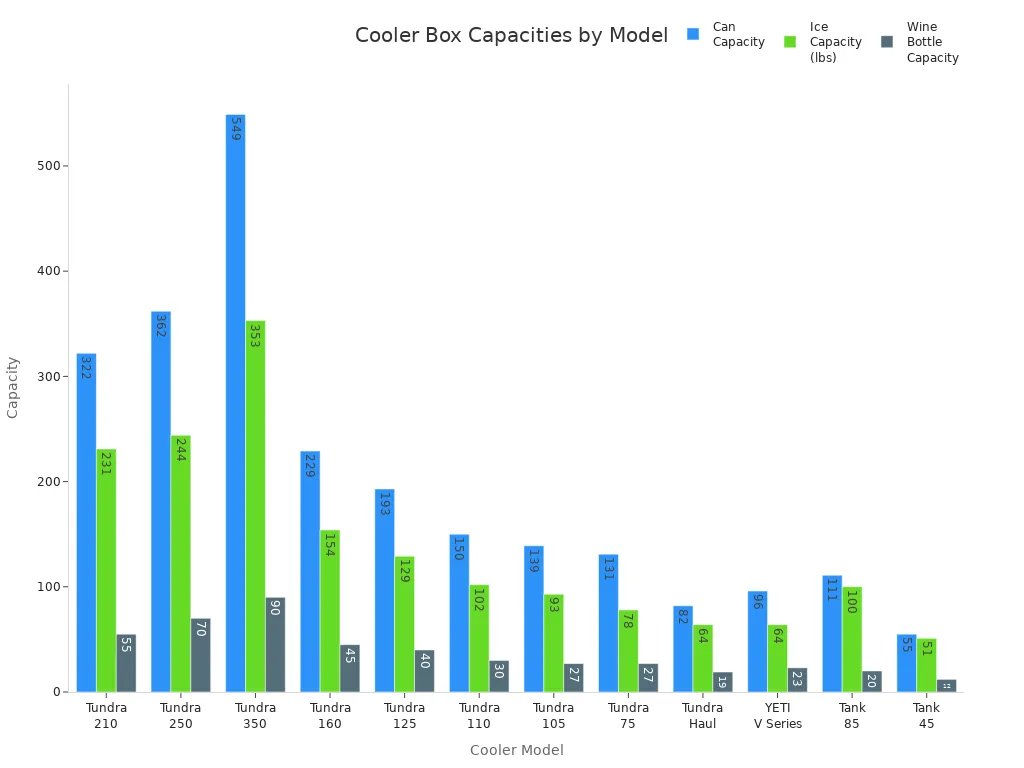
When you look at cooler sizes, check both the quart rating and the number of cans or bottles it can hold. For example, the Tundra 210 holds up to 322 cans or 231 pounds of ice. The Tundra 350 can fit 549 cans or 353 pounds of ice. These extra-large coolers are perfect for long trips, big groups, or special events.
A size camping cooler with a capacity of 45 to 75 quarts works for most families or small groups. If you plan a big reunion or a week-long adventure, you may want a cooler with over 100 quarts of space. Always check the cooler size and capacity before you buy, so you get the best fit for your needs.
Note: Cooler capacity affects how long your ice lasts and how easy the cooler is to move. Pick a cooler that balances storage, ice retention, and portability.
Hard Cooler Features
Insulation & Ice Retention
When you choose a hard cooler, you want the best ice retention possible. The top hard-sided cooler models use advanced insulation to keep your food and drinks cold for days. Here are the most effective insulation technologies:
- Thick walls and a well-insulated lid keep warm air out and cold air in.
- Durable seals around the lid stop air leaks and slow down ice melting.
- Special insulation materials inside the cooler help maintain low temperatures even in hot weather.
You can see how long the best hard coolers keep ice in real-world tests:
| Cooler Model | Average Ice Retention Time |
|---|---|
| RovR RollR | Up to 10 days |
| KUER 110-Quart Cooler | Around 7 days |
| YETI Tundra 125 | Over 7 days |
| Coleman 316 Series | Up to 6 days |
| Igloo Super Tough STX 150 | Around 5 days |
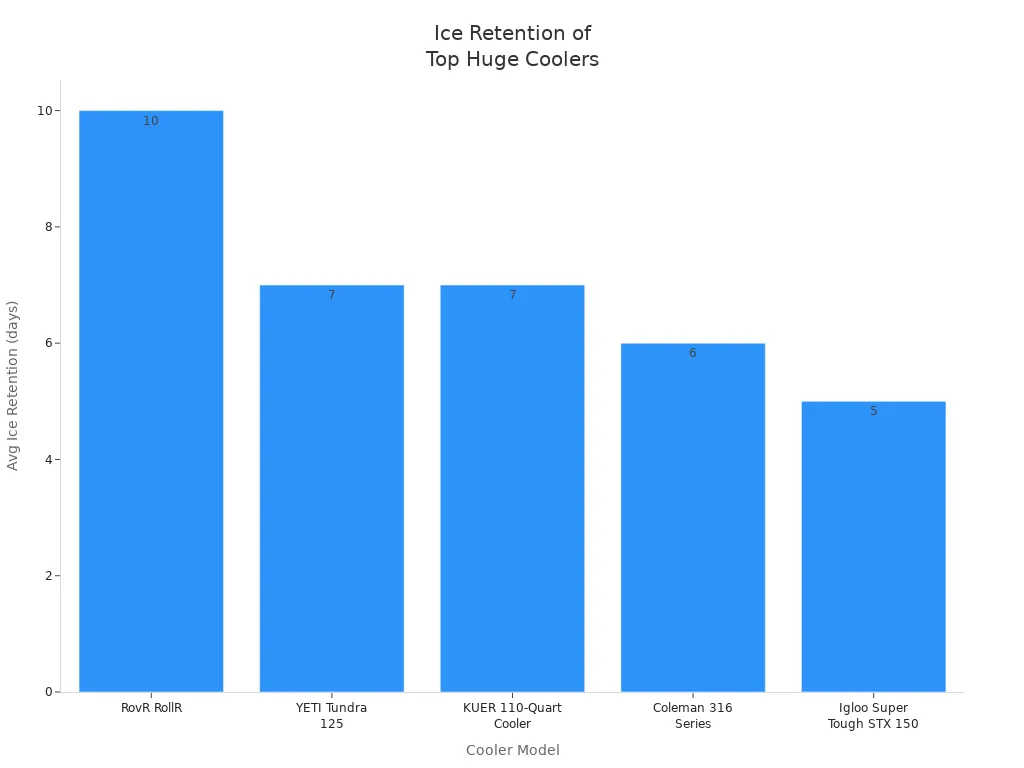
Coolers keep ice the longest when you use block ice and pre-chill your items. Always look for a hard-sided cooler with thick insulation and tight seals for the best performance.
Durability & Materials
A hard cooler must handle rough use outdoors. Rotomolded polyethylene is the top choice for hard-sided cooler construction. This material creates a single-piece, seamless shell that resists drops, bumps, and heavy loads. Thick foam insulation and airtight gaskets add to the cooler’s strength and ice retention. Injection-molded and blow-molded plastics appear in some coolers, but rotomolded models offer the best durability and performance. You can trust a hard cooler made with these materials to last for years.
Portability
Moving a huge hard-sided cooler can be tough, but smart features make it easier. Look for coolers with strong handles and wheels. These help you move the cooler even when it is full. Some hard coolers have built-in cup holders, bottle openers, and drainage plugs. These features add convenience and improve your outdoor experience. Lightweight construction and advanced insulation also make the cooler easier to carry without losing ice retention.
Seals & Latches
Seals and latches play a big role in hard cooler performance. Rubber gaskets or sealing lips create a tight closure, keeping cold air inside. Strong mechanical latches and hinges hold the lid firmly in place. Some premium hard-sided coolers include pressure-release valves for an even better seal. These features help coolers keep ice the longest and maintain stable temperatures, even on long trips.
Tip: Always check the seals and latches before your trip. A tight seal means better ice retention and cooler performance.
Best Cooler for Camping & Outdoor Use
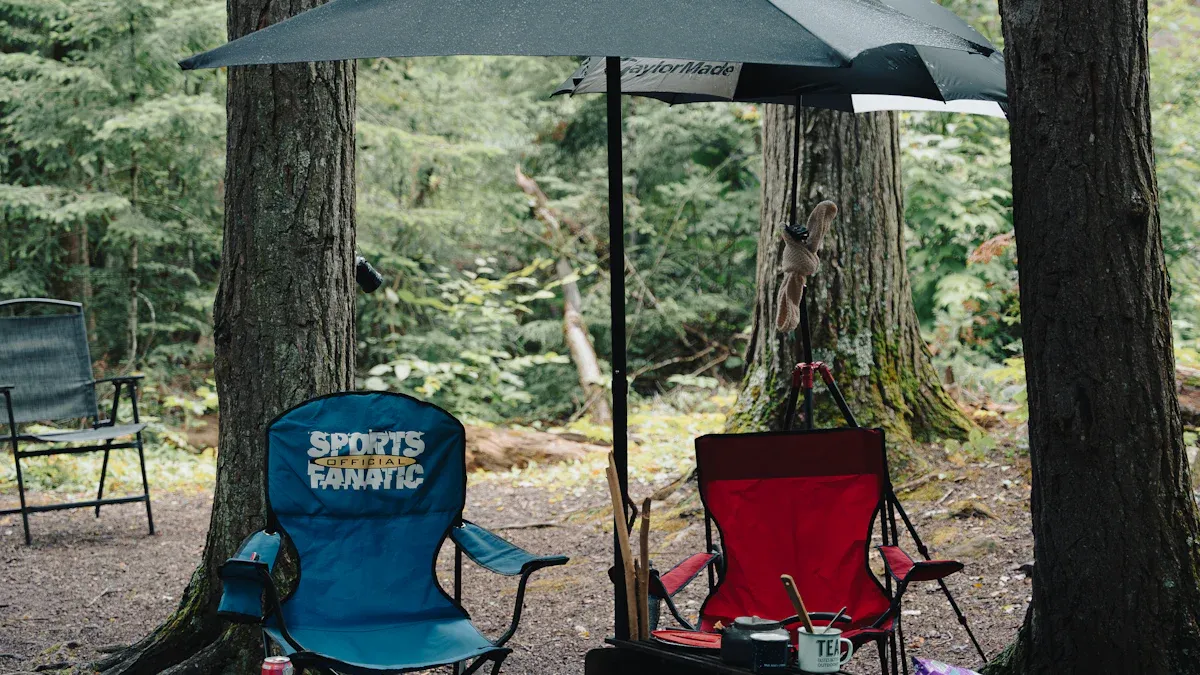
Camping Cooler Essentials
When you plan a camping trip, you want a camping cooler that keeps your food safe and your drinks cold. The best cooler for camping uses thick insulation, rugged materials, and a design that fits your group size. You should look for a hard cooler with at least three inches of insulation. This helps keep ice for up to five days, even in hot weather. Choose a camping cooler with strong handles, wheels, and a drain plug for easy cleaning. Many campers like coolers with cup holders, bottle openers, and quick-access lids. These features make your outdoor experience better.
Here are the essentials for a camping cooler:
- Hard cooler with thick insulation for long ice retention.
- Durable, weather-resistant materials for rough outdoor use.
- Ergonomic handles or wheels for easy transport.
- Large capacity for food and drinks based on your trip length.
- Accessories like ice packs, dividers, and tie-down kits.
Tip: For a family picnic or group camping, pick a high-capacity camping cooler with multi-compartment storage to keep items organized.
Fishing & Marine Use
If you love fishing, you need a hard cooler built for the water. Marine coolers have special features for fishing trips. They use rotomolded construction to resist impacts and saltwater. These coolers keep ice longer, so your catch stays fresh all day. Many fishing coolers have non-slip rubber feet and tie-down points. This keeps the cooler stable on your boat. Some models include rulers for measuring fish, heavy-duty latches, and comfortable handles.
A fishing cooler often holds 65 quarts or more. This gives you space for drinks, food, and your catch. You can use the cooler as a seat or cutting board on your boat. The best cooler for camping and fishing combines durability, ice retention, and smart features for outdoor adventures.
Hunting & Game Storage
Hunting trips need a hard cooler with top insulation and large capacity. You want to keep game meat cold and safe for days. Choose a camping cooler with thick walls and a waterproof seal. Look for bear-proof locks and heavy-duty handles. Wheels help move large coolers over rough ground. For day hunts, a 50-quart cooler works well. For multi-day trips, pick a 75- to 100-quart model. Extended hunts may need a 150-quart cooler.
| Hunting Trip Duration | Recommended Cooler Capacity | Key Features |
|---|---|---|
| Day Hunt | ~50 QT | Compact, good insulation, easy to carry |
| Multi-Day | 75-100 QT | Superior insulation, keeps game fresh for days |
| Extended | 150+ QT | Roto-molded, max ice retention, rugged durability |
A hunting cooler with dividers and ice packs helps organize your game and keeps everything cold. Always match your cooler size to your trip length and game size.
Backyard & Tailgating
For backyard parties and tailgating, you want a cooler that is easy to move and keeps drinks cold for hours. A lightweight hard cooler with wheels and strong handles works best. Choose a camping cooler with a spacious interior for lots of food and beverages. Advanced insulation keeps everything cold, even on hot days. Some coolers have stylish designs and built-in cup holders, making them perfect for social events.
You can use your camping cooler for a family picnic, outdoor barbecue, or sports event. Look for a cooler that is easy to clean and has a drain plug. Wheels make it simple to move the cooler across grass or pavement. With the right hard cooler, your outdoor gatherings stay fun and refreshing.
Specialty & Advanced Options
Bear-Resistant Coolers
When you camp or hike in bear country, you need a hard cooler that keeps your food safe from wildlife. Bear-resistant coolers must meet strict standards set by the Interagency Grizzly Bear Committee (IGBC). To earn IGBC certification, a hard cooler must pass several tough tests:
- Inspectors check the latches, hinges, and lids to make sure bears cannot break or open them.
- The cooler faces a live grizzly bear for up to 60 minutes. The bear tries to get inside, but the hard cooler must stay closed and undamaged.
- If the bear cannot break the hinges, seams, or lids, and cannot make a gap larger than ¼ inch, the cooler passes.
- You must lock or latch the hard cooler properly for it to work as bear-resistant.
- You can check the IGBC list to see if your hard cooler is certified.
Many public lands require you to use a certified hard cooler. Always follow local rules to keep your food and wildlife safe.
Electric Coolers
Electric coolers, also called portable refrigerators, offer a new way to keep food cold. Unlike a hard cooler or soft-sided cooler, an electric cooler does not need ice. You plug it into a power source, and it keeps a steady temperature. Here is how electric coolers compare to traditional options:
| Feature | Traditional Hard Cooler or Soft-Sided Cooler | Electric Cooler (Portable Refrigerator) |
|---|---|---|
| Initial Cost | Lower ($20 – $400) | Higher ($300 – $1,500+) |
| Ongoing Cost | High (buying ice) | Low (uses electricity) |
| Cooling Performance | Depends on ice and weather | Consistent, can freeze items |
| Convenience | Needs ice, can get messy | No ice, no mess |
| Food Safety | Temperature can change | Stable, safer for food |
| Usable Space | Ice takes up space | All space for food and drinks |
| Portability | Lighter when empty | Heavier, but steady weight |
| Power Needs | None | Needs 12V or 110V outlet |
| Durability | Very durable (hard cooler) | Durable, but has electronics |
You may choose a hard cooler or soft-sided cooler for simple trips, but electric coolers work best for long journeys with easy access to power.
Floating & Waterproof
Water activities need a special hard cooler or soft-sided cooler that floats and stays dry. Floating coolers use ultralight materials and large interiors to hold many items. They keep ice for up to 7 days, so your drinks stay cold on the water. These coolers float upright and do not tip over. Many have reversible lids with cup holders, double handles for easy carrying, and non-slip surfaces for safety.
- Use a tether to attach your hard cooler or soft-sided cooler to your kayak or boat.
- Always secure the lid tightly to prevent spills.
- After your trip, rinse the cooler with fresh water, drain it, and let it dry before storing.
A floating hard cooler or soft-sided cooler makes your day on the water safer and more fun. You get cold drinks, easy access, and peace of mind.
Maximize Cooler Performance
Packing Tips
Packing your huge cooler box the right way helps you keep food cold and fresh during your camping trip. Start by freezing foods before you pack them. Frozen items stay cold longer and help keep other foods chilled. Always pack the largest foods first. Place smaller items around them to use every bit of space. You can save room by storing produce that does not need refrigeration outside the cooler. Use wire racks or containers to separate foods and keep snacks easy to reach. Pack your cooler in layers, alternating food and ice. This method reduces air pockets, which cause ice to melt faster. Foldable ice sheets or frozen towels on top help prevent cold air from escaping. Remember to add items gradually and only pack what you need for your camping adventure.
Tip: Organize your cooler so you can grab frequently used items quickly. This keeps cold air inside and helps your ice last longer.
Ice Ratios
Getting the ice-to-contents ratio right is key for any camping trip. You should aim for a 2:1 ratio, which means twice as much ice as food and drinks. Start by pre-chilling your cooler with cubed ice, then empty it. Place block ice at the bottom, then add your food and drinks. Fill any open spaces with more cubed ice. This method keeps everything cold and helps your ice last for days. Using less ice will make your cooler warm up too fast, especially during long camping trips. If you need more space for food, consider bringing a second cooler to maintain the right ratio.
- Pre-chill the cooler before packing.
- Use block ice for longer trips and cubed ice for quick chilling.
- Fill all gaps with ice to avoid warm air pockets.
Cleaning & Storage
Proper cleaning and storage keep your cooler ready for every camping adventure. After each use, empty the cooler completely. Wash it with mild soap and warm water to remove dirt and bacteria. For tough stains or odors, use a baking soda paste, vinegar solution, or lemon juice. Rinse the cooler well to remove any cleaning residue. Dry the cooler fully with the lid open to prevent mold and mildew. Store your cooler in a cool, dry place away from sunlight. Keep the lid slightly open to allow air flow and stop odors from building up. Clean all accessories, such as ice packs and dividers, before storing them with your cooler.
Note: Avoid storing your cooler in outdoor sheds or garages. These places can get too hot or cold and may damage your cooler over time.
Choosing the right huge cooler box starts with knowing your group size, trip length, and activity. You should pick a cooler with strong insulation, durable materials, and features that fit your needs. The table below shows expert tips for different cooler types and features:
| Aspect | Details & Recommendations |
|---|---|
| Cooler Types | Hard-sided: Best for long trips. Soft-sided: Good for short outings. Electric: Needs power, no ice required. |
| Features | Wheels, seat cushions, straps, hydrolock zippers, bear locks. |
| Usage Tips | Pre-chill, fill fully, mix ice types, keep shaded. |
KUER stands out with advanced insulation, global service, and many customization options.
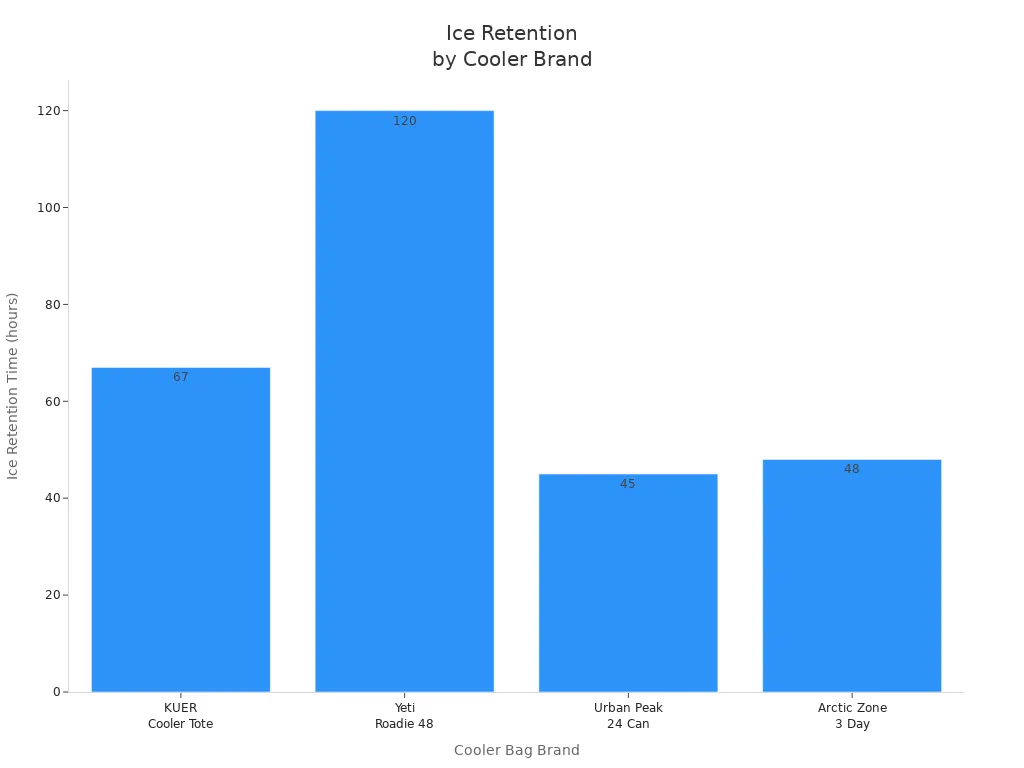
You can trust KUER’s product range for reliable performance on any adventure. Review KUER’s options or reach out for expert advice.

FAQ
How do you choose the right size cooler box for your trip?
You should match the cooler size to your group and trip length. For a weekend trip with four people, a 65-quart cooler works well. Experts recommend 15-20 quarts per person for multi-day adventures.
How long can a KUER cooler keep ice frozen?
KUER coolers use thick insulation and tight seals. You can expect ice retention for up to 7 days in most conditions. Pre-chill your cooler and use block ice for the best results.
What makes rotomolded coolers better for outdoor use?
Rotomolded coolers have a seamless, one-piece design. This construction resists impacts and keeps cold air inside. You get better durability and longer ice retention compared to standard coolers.
Can you use dry ice in a huge cooler box?
Yes, you can use dry ice in most hard coolers, including KUER models. Dry ice keeps food frozen for longer trips. Always handle dry ice with gloves and allow for ventilation.
How do you clean and store your cooler after a trip?
Wash your cooler with mild soap and warm water. Use baking soda for tough odors. Dry the cooler with the lid open. Store it in a cool, dry place to prevent mold and odors.


